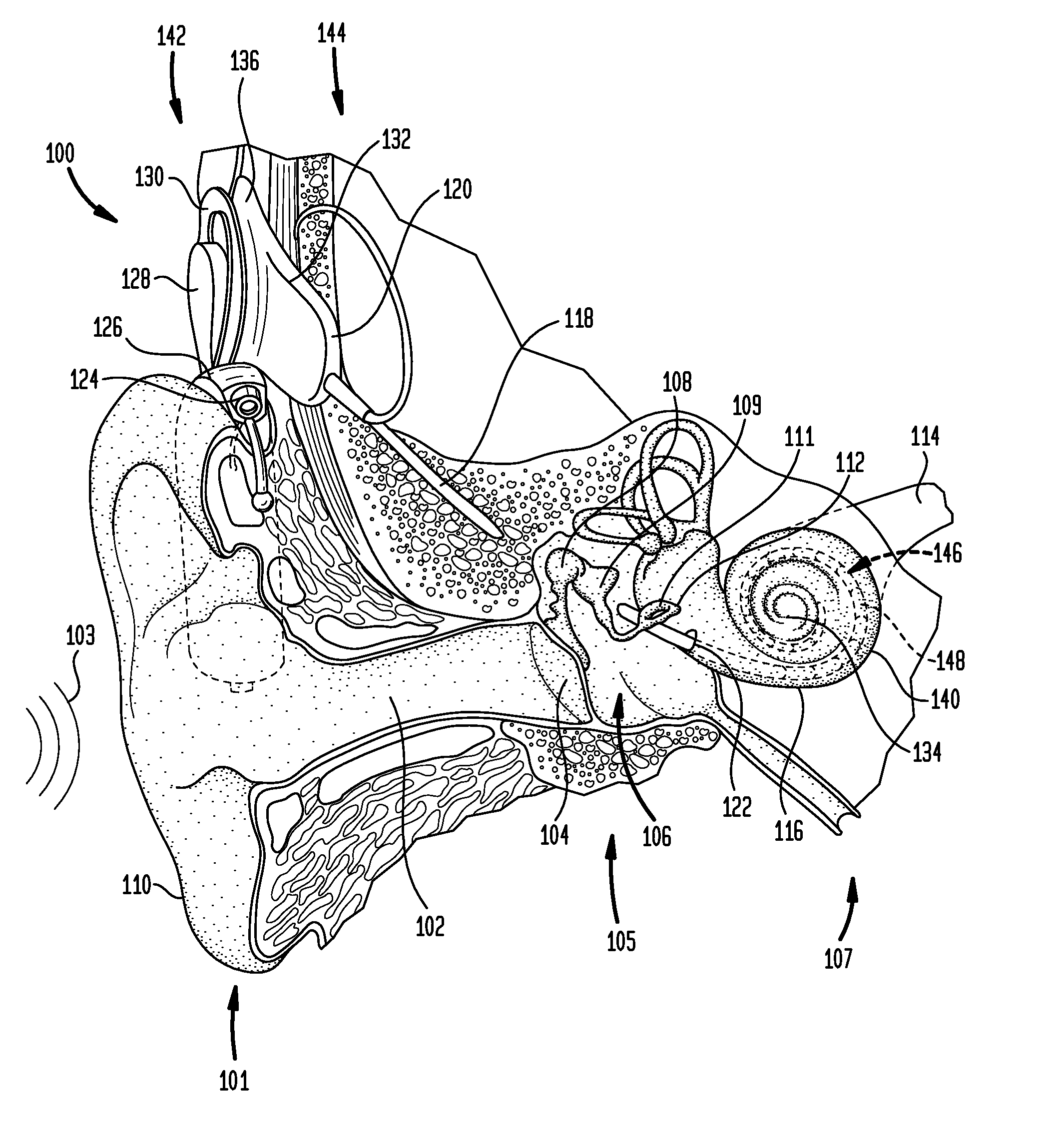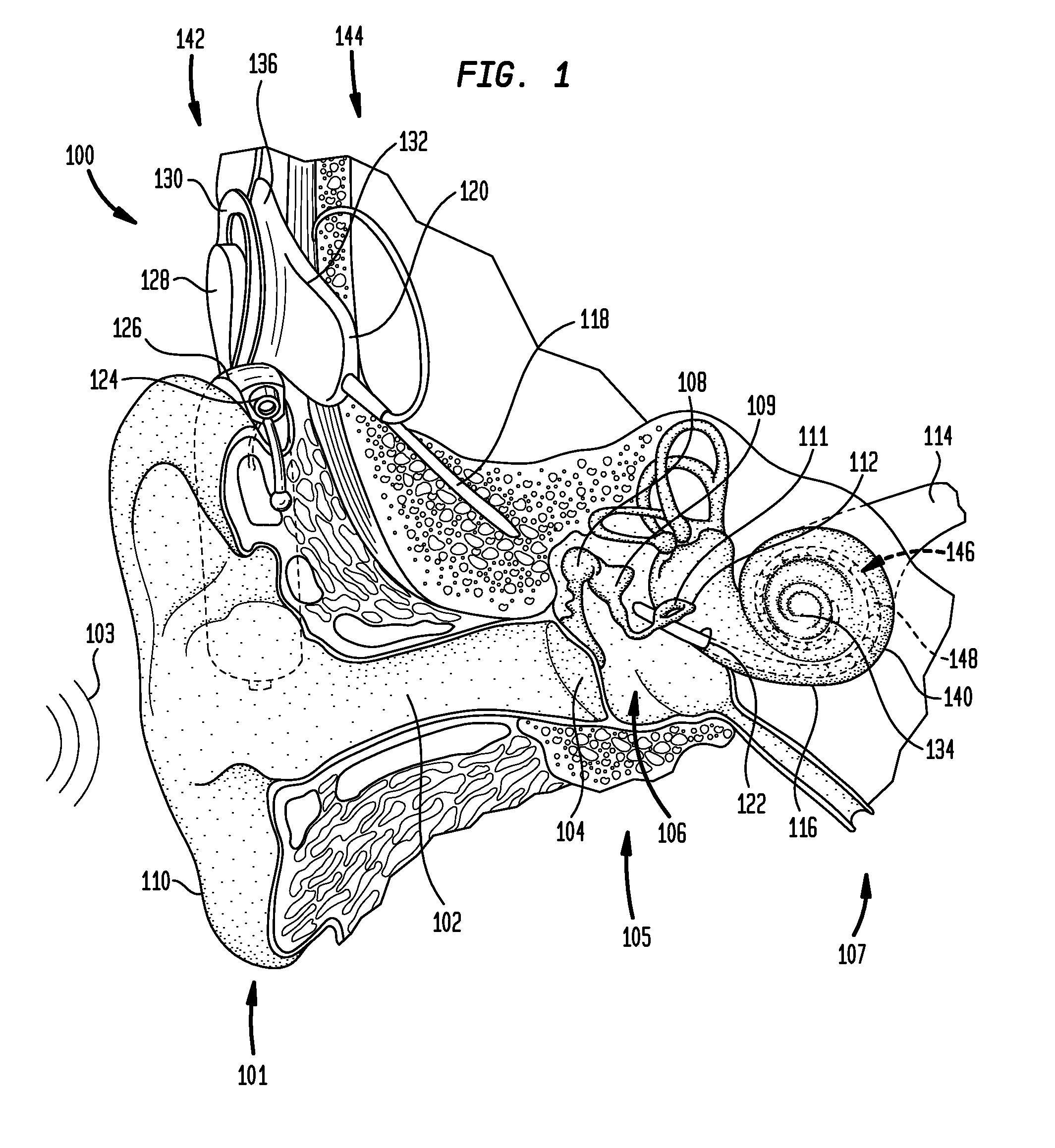Electroneural interface for a medical implant
a technology of electronic interface and medical implants, applied in the field of medical devices, can solve the problems of conductive hearing loss, impeded sensory hair cells, and individual hearing loss of both types, and achieve the effect of promoting the growth of peripheral processes
- Summary
- Abstract
- Description
- Claims
- Application Information
AI Technical Summary
Benefits of technology
Problems solved by technology
Method used
Image
Examples
Embodiment Construction
[0026]Aspects of the present invention are generally directed to improving the interface between one or more electrode contacts of an implantable medical device and the neurons of a recipient of the medical device. In an embodiment, a growth factor is applied to stimulate the growth of the peripheral processes or dendrites of the neurons. An electric field is applied either subsequent to or concurrent with the application of the growth factor to direct the growth of the peripheral processes towards the electrode contact. Growing peripheral processes towards the electrode contacts may reduce the charge require to stimulate the peripheral processes and thus improve performance of the medical device.
[0027]Embodiments of the present invention are described herein primarily in connection with one type of medical device, a hearing prosthesis, namely a cochlear prosthesis (commonly referred to as cochlear prosthetic devices, cochlear implants, cochlear devices, and the like; simply “cochle...
PUM
 Login to View More
Login to View More Abstract
Description
Claims
Application Information
 Login to View More
Login to View More - R&D
- Intellectual Property
- Life Sciences
- Materials
- Tech Scout
- Unparalleled Data Quality
- Higher Quality Content
- 60% Fewer Hallucinations
Browse by: Latest US Patents, China's latest patents, Technical Efficacy Thesaurus, Application Domain, Technology Topic, Popular Technical Reports.
© 2025 PatSnap. All rights reserved.Legal|Privacy policy|Modern Slavery Act Transparency Statement|Sitemap|About US| Contact US: help@patsnap.com



